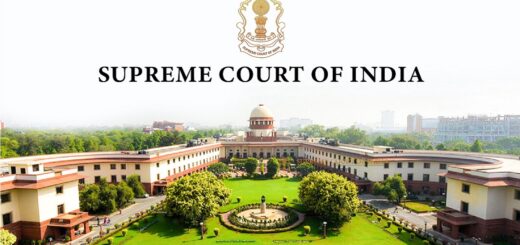Supreme Court Clears Man Accused of Killing Woman with Coconut Scraper in 1989 Due to Lack of Evidence.

The Supreme Court cleared a man accused of murdering a woman by using a coconut scraper from the kitchen to hit her on the head several times. The Court was reviewing a criminal appeal from the accused against the Kerala High Court’s decision, which had confirmed his conviction and sentence. The two-Judge Bench, made up of Justice Abhay S. Oka and Justice Augustine George Masih, noted that the prosecution failed to prove the accused’s involvement in the crime.
According to the prosecution, a man’s morning work routine in 1989 led him to find a woman’s body in a paddy field. He reported it to the police, resulting in a case of unnatural death. The postmortem showed six injuries on the left side of her head, which were severe enough to cause death, along with bruises on her wrist and knee. These head injuries could have been caused by a coconut scraper. To establish the accused’s guilt, the prosecution claimed there was a motive linked to an illicit relationship between the accused and another individual. This relationship formed because the husband of the second accused was living abroad, leaving her alone with her two children, which brought the two closer together.
The deceased was related to accused number 2. Since this accused lived alone, the deceased often visited her and sometimes stayed overnight. When their relationship became known and faced local disapproval, the appellant, following accused number 2’s advice, married the deceased officially to hide their relationship. This marriage was later dissolved. According to the prosecution, on the day of the incident, both the accused and the deceased were at accused number 2’s house. An argument broke out between the appellant and the deceased about his relationship. It is claimed that the appellant took a coconut scraper from the kitchen and struck the deceased on the head several times, resulting in her death. He allegedly then dragged her body out of the room and took it to a nearby paddy field. The Trial Court found him guilty under Sections 302 and 201 of the Indian Penal Code (IPC), and the High Court confirmed this decision. Upset by the ruling, he appealed to the Supreme Court.
The Supreme Court, considering the case’s details, stated, “According to the prosecution, Gouri’s death occurred after 11:30 PM, and it has been determined that the Appellant was solely responsible for her murder. The body must have been disposed of before 5 AM on 17.08.1989. Evidence shows that the distance from accused number 2’s house to the paddy field where the body was found is about 1 KM, with a sawmill operating 24 hours in between.” The Court noted that if the prosecution’s claim is true, and the appellant carried the deceased’s body on his shoulder to the paddy fields, it is likely someone would have seen him, especially with a functioning mill nearby.
This raises more questions about the trustworthiness of the case presented by the prosecution. The series of events that the prosecution claims are complete has obvious flaws and major gaps. This leads the Court to conclude that the prosecution has not succeeded in proving the guilt of the Appellant. Therefore, the Apex Court accepted the appeal and cleared the accused.
Cause Title- Karakkattu Muhammed Basheer v. The State of Kerala (Neutral Citation: 2024 INSC 838) Appearance:
Appellant: Senior Advocate Thomas P. Joseph, AOR Tom Joseph, and Advocate Linto K.B.
Respondent: AOR Harshad V. Hameed, Advocates Dileep Poolakkot, and Ashly Harshad.









